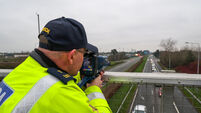Drug-testing at Electric Picnic found 'dangerously potent' MDMA pills, powders and crystals

The drugs were analysed after a 'back of house' testing pilot at Electric Picnic in September, the first of its kind in Ireland.
Dangerously potent MDMA pills, powders, and crystals are being sold in Ireland, the HSE’s first drug-testing pilot has found, identifying three new psychoactive substances including one which causes mental health harm.
The first ‘back of house’ drug testing pilot took place at Electric Picnic in September and saw 46 samples submitted for analysis.
They found six ecstasy pills, which looked the same but had radically different levels of MDMA.
Also identified was 3-CMC in white crystals when a person who had taken this needed medical help. This is a cathinone drug that has been linked with suicidal ideation.
The findings immediately led to three risk communications to protect people at the site, the HSE said.
Among 19 MDMA samples were eight powders and 11 pills with five tablets testing as almost pure MDMA.
Some six identical-looking ecstasy ‘Mybrand’ skull pills contained a range of MDMA from 36mg to 235mg.
They found three new psychoactive substances; 3-CMC, 5-MAPB and 4-HO-MiPT.
Some 74% of samples were identified on-site by the National Drug Treatment Centre Laboratory, and 17% on further analysis in a laboratory. To date, four samples remain of unconfirmed content.
A report on the project said: “Our findings can now confirm that Ireland is also witnessing dangerously potent MDMA pills, powders, and crystals appearing on the market, similar to trends identified across to the rest of Europe.”
It warned the purity of MDMA products across Europe is “dangerously high”, which has health risks for anyone taking them.

Professor Eamon Keenan, national clinical lead addiction services, said the aim of the testing was to protect people’s health and learn more about the drugs being used here.
“Of particular concern is the emergence of cathinone-type substances, given their link with adverse mental health outcomes and suicidality,” he said.
“The HSE was able to quickly share accurate information with the public to encourage harm reduction discussions both in person and online over the course of the event.”
National Social Inclusion Office Emerging Drug Trends project manager Nicki Killeen said the results give insight into the changing drug landscape.
“It is clear that there is a need to further expand this approach to include more frequent analysis in new settings,” she said.
“As the drug market evolves, Ireland must prepare for possible changes and associated health threats, with substance analysis having a central role in this process to help us identify concerns and respond at a faster rate to reduce harm.”
The report recommends expansion of drug monitoring activities through recruitment of additional analytical staff and surveying people who take recreational drugs and attend festivals or night-life activities among other changes.
The event heard from Minister of State for Public Health, Wellbeing and the National Drugs Strategy Frank Feighan and Detective Superintendent Sé McCormack from the Drugs and Organised Crime Bureau of An Garda Síochána, as well as European Monitoring Centre for Drugs and Drug Addiction analyst João Matias and the HSE.










